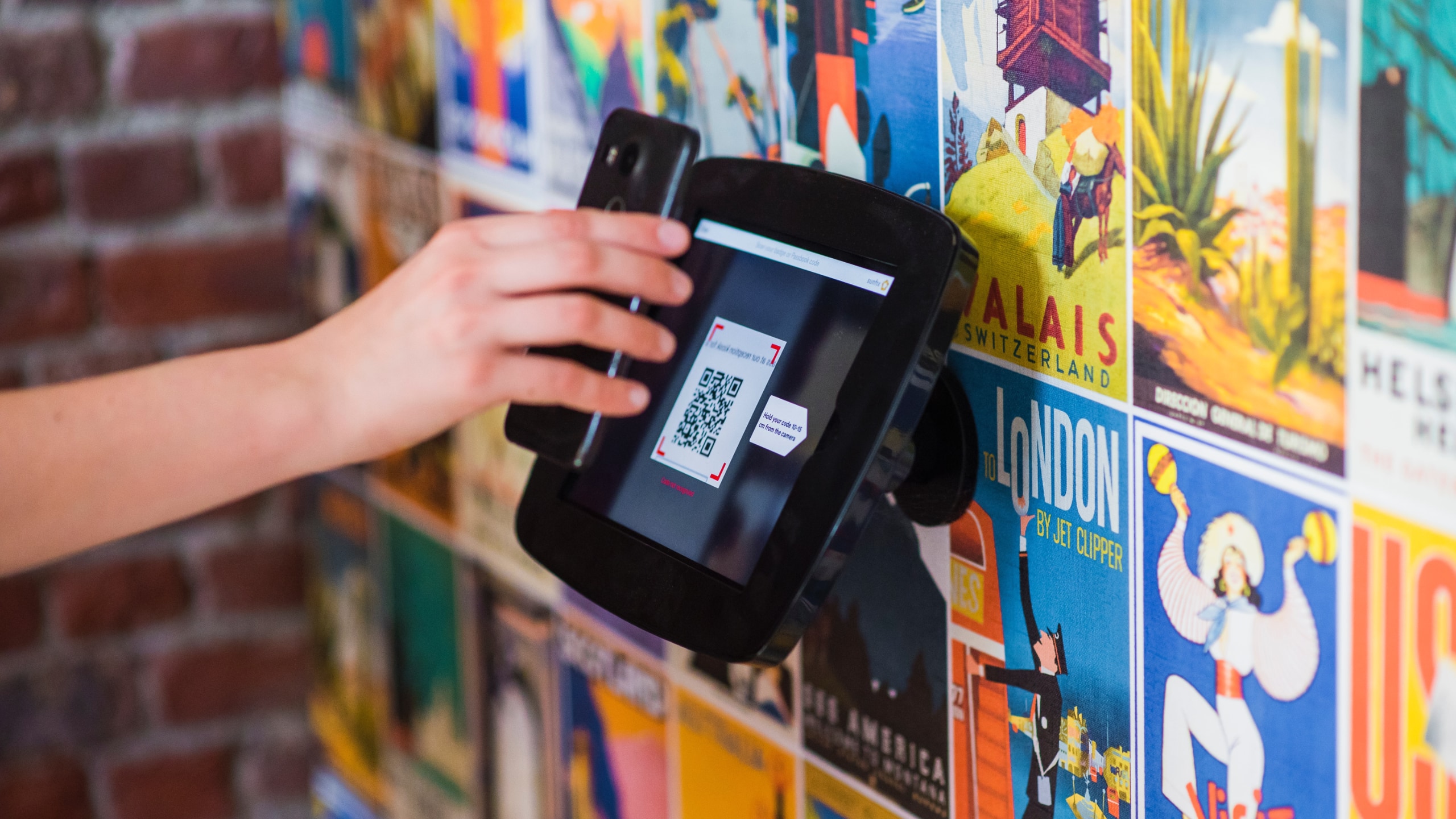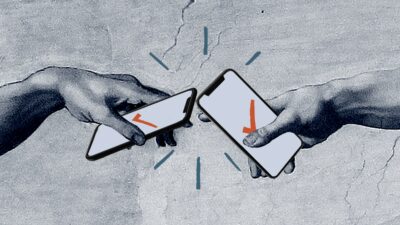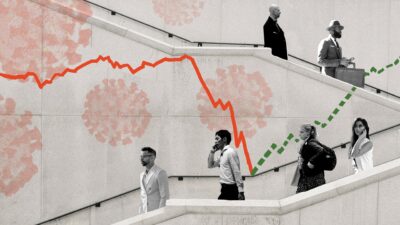Kai Riemer and Sandra Peter

Tracing the next pandemic – 8 lessons from digital contact tracing
COVID won’t disappear and there will be a next pandemic, so it is important to be prepared. Digital contact tracing apps, launched with great promise early in the pandemic, are now largely regarded as ineffective by many countries. What have we learned from the various tracing methods to better prepare for the next plague?
What is digital contact tracing?
In early 2020 the first smartphone-based digital contact tracing apps were released as a measure to fight the spread of the SARS-CoV-2 virus. In research we published in 2020 we defined digital contact tracing as the use of smartphones to track close encounters between people. Such solutions use Bluetooth to record the proximity of smartphones carried by people who spend enough time, and in close enough proximity, with each other to risk infection. The resulting list of contacts allows the system to notify any close contacts of those who test positive.
Lessons learned
While digital contact tracing was regarded as an important weapon in the fight against the COVID-19 pandemic, the picture has been mixed. Some European countries like the UK, Switzerland and Germany report some positive results, in Australia public sentiment is quite negative and the local CovidSafe app has been touted a waste of taxpayer money. So, what have we learned?
Here are lessons from a year and a half of digital contact tracing efforts:
1. There are no real benefits to digital contact tracing when there is no clear immediate health risk
When there are low or no levels of infection, manual contact tracing, combined with check-in apps for accessing venues, provides better outcomes. Australia with its low case rates and only localised outbreaks is a good example of that. Digital contact tracing will pick up very few contacts when infection rates are low. Other means are more effective in such instances.
2. Digital contact tracing is useful when there are high growth rates and widespread and prolonged infection
When a virus spreads fast in a large population digital contact tracing is one measure to help curb the spread and save lives, as we predicted in our research published early in the pandemic. The UK provides a good example of this. A recent study in the journal nature has shown that the National Health Service app sent out 1.7 million exposure notifications in the last 2.5 months of 2020; it is estimated that the app averted between 300-600K new infections in this period, and that therefore every 1% in app uptake can reduce the number of cases between 0.8 and 2.3%.
3. Adoption is critical and needs significant resourcing
Without widespread support from all stakeholders in the community, adoption rates (or usage rates) remain below the necessary threshold of 15% at which digital contact tracing has any measurable benefits. Our research shows that adoption will depend on immediate health risk, prior experience with pandemics, societal values and national culture, role of government, trust in government and trust in technology in each society. Accordingly, a recent MIT article points to a lack of trust in government and technology as factors in low adoption/usage rates of digital contact tracing in many US states.
4. Digital contact tracing needs continuous development
As the virus mutates, new variants that are more easily transmissible have highlighted the need to adjust the infection exposure window. Health officials are warning that with the Delta variant it no longer takes up to 15 minutes to pass on the virus. Infection can now occur after just five to 10 seconds during a fleeting encounter while passing by a stranger. Contact tracing apps such as Australia’s COVIDSafe still track users who have been within 1.5 metres of each other for a period of 15 minutes or more. For some apps (such as CovidSafe) this means the way the information is filtered needs to be altered to reflect how the current variants spread, for other apps it can mean that the apps themselves have to be updated.
5. Integrate tech solutions
A number of other technologies have been integral to fighting the pandemic. As the virus changes and as we face new pandemics it becomes clear that tracing, check-in, symptom reporting, local wastewater testing and vaccination passport technologies all play a role in controlling the spread of the virus. An integrated approach can help better manage the pandemic.
For example, Australia uses QR codes for venue check-in through state level apps such as the Service NSW app or Check in TAS. Combining digital contact tracing (CovidSafe) and QR code venue check-in in one app would have a dual benefit; CovidSafe would be much more widely adopted, as it would be mandatory to enter venues, and contact tracing would extend beyond venues (since CovidSafe is now in use) and be more precise inside of venues.
In the UK, the COVID Zoe symptom tracker app, which asks users to log their symptoms, played a critical role in understanding how COVID-19 affects different groups of people, and how different variants might present with different symptoms.
Wastewater testing could also be used as an early-warning sign that there is an outbreak of the virus, as studies indicate that it can detect coronavirus weeks before people show symptoms.
For instance, a system developed by Colorado Mesa University integrates self-reported student symptoms, wastewater testing, contact tracing and sequencing data from student tests to develop geographic heat maps that can identify and prevent outbreaks as they emerge.
6. Convenience trumps privacy
While privacy was a main concern early during the adoption of digital contact tracing, later use of other more invasive tracking solutions has shown that users prioritise convenience over privacy in their day-to-day use. In Australia we saw wide-spread adoption of state-level QR-code scan based check-in apps as people are reminded and required to access and use these apps every time they enter a shop, restaurant, place of work or school. These apps track people’s whereabouts in ways regarded as unacceptable for digital contact tracing raising loud concerns and calls for safeguards from experts and citizens. While there have been no reports of breaches, no complaints made, and no investigations underway regarding the COVIDSafe contact tracing app, the widely used QR code check-in apps’ data has been accessed by police in a number of states for law enforcement activities.
7. Reliance on big tech is a double-edged sword
Having digital contact tracing at the operating system level dramatically increases adoption and use. For example, on Apple’s iPhones the Exposure Notification system can operate in the background without the need to install an app, users can easily opt in when prompted by the system. However, Google and Apple said last year that they plan to shut down the exposure notification program after the pandemic ends, potentially cutting off the resource for countries still struggling with the/a pandemic.
8. Interoperability between jurisdictions
The COVID-19 pandemic has highlighted the failure to coordinate responses across geographic areas and national jurisdictions at many levels.To fight pandemics at a global level, digital tracing solutions need interoperability across states and countries to avoid national isolation and prolonged travel bans.
This is part of a series of insights related to Coronavirus (COVID-19) and its impact on business.
Image: Proxyclick
Kai Riemer is Professor of Information Technology and Organisation, and Director of Sydney Executive Plus at the University of Sydney Business School. Kai's research interest is in Disruptive Technologies, Enterprise Social Media, Virtual Work, Collaborative Technologies and the Philosophy of Technology.
Dr Sandra Peter is the Director of Sydney Executive Plus at the University of Sydney Business School. Her research and practice focuses on engaging with the future in productive ways, and the impact of emerging technologies on business and society.
Share
We believe in open and honest access to knowledge. We use a Creative Commons Attribution NoDerivatives licence for our articles and podcasts, so you can republish them for free, online or in print.






